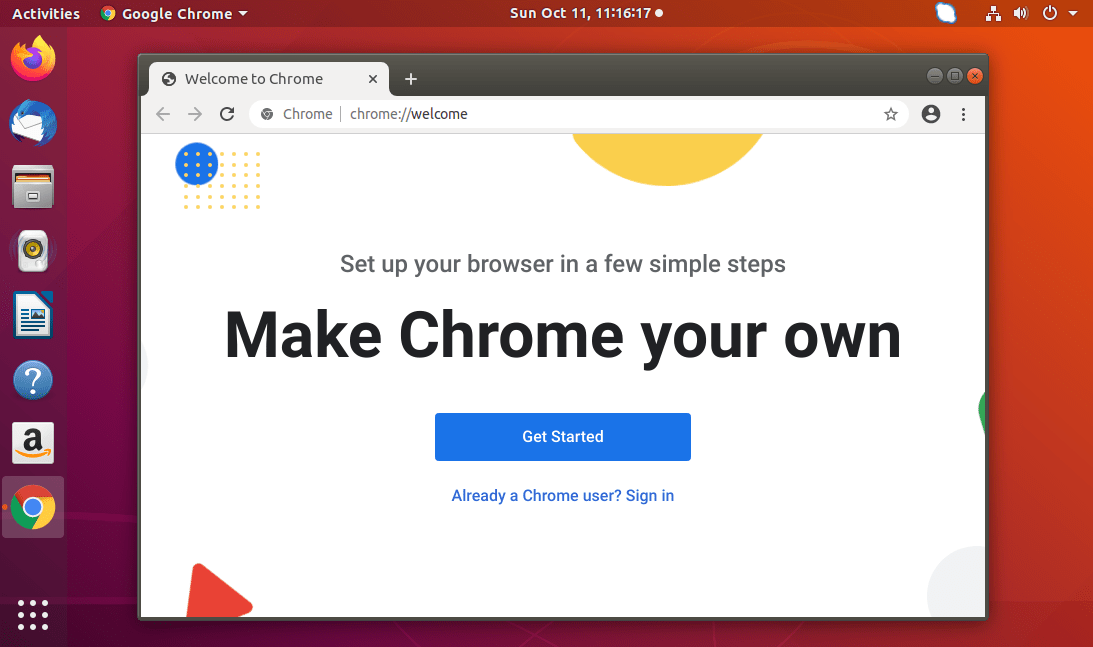

Google chrome install ubuntu 16.04 how to#
But the truth of the matter is, very few are actually talking about how to use Snap. Package management system as if it was a game changer. Oracle Linux checklist: What to do after installation This Linux learning path will help you start using the OS like a proītop is a much-improved take on the Linux top command But everyone has been going on and on about this new Open source: Must-read coverage Maybe those last bits are a bit of an exaggeration. All the pundits are talking about Snap packages as if they were going to save the planet! Snap packages will cure every ailment the world has ever seen and are running for POTUS 2016. Oh Snap, you didn’t? Yes you did…you’re just a bit confused. You’ve heard all the noise about the latest iteration of Ubuntu. For more info, visit our Terms of Use page. This may influence how and where their products appear on our site, but vendors cannot pay to influence the content of our reviews.

We may be compensated by vendors who appear on this page through methods such as affiliate links or sponsored partnerships. But what can you do with them? How can you install them? Jack Wallen shows you how to install snaps on Ubuntu 16.04 with ease. Then, go the GNOME extensions website in your web browser (or click on the GNOME logo in your browser’s toolbar) and browse the available extensions.How to install Snap packages on Ubuntu 16.04 Now that you have both the browser extension and host connector install you should restart your browser to make sure that all of the changes take effect. If you do not install the connector package you will see an error that reads “although gnome shell integration extension is running, native host connector is not detected” when you visit the GNOME Extensions website, which brings us to the next step… Step 3: Install Extensions Prefer the command line? You can install chrome-gnome-shell on Ubuntu using the command: sudo apt install chrome-gnome-shellĪs this is an “invisible” package you won’t get an app shortcut for it after installing it. You can install the chrome-gnome-shell package - despite the ‘chrome’ in the package name it works with Firefox too - from Ubuntu Software: Step two is to install the native connector package that lets the browser extension communicate with the GNOME Shell desktop.

GNOME Shell Integration Add-on for Firefox Step 2: Install ‘Chrome GNOME Shell’ package GNOME Shell Integration Extension for Google Chrome To install the GNOME Shell integration extension head to the respective add-on store for your browser using your browser and follow the prompts there: This free, open source extension is available for Mozilla Firefox and Google Chrome (as well as Chromium-based browsers like Vivaldi and Microsoft Edge). The first step is to install the GNOME Shell integration extension in your chosen web browser. Install the official browser extension first Together, these let you install GNOME extensions from the GNOME Extensions website. It’s a three step process that involves installing the GNOME Shell host connector, the browser add-on, and the desktop extension manager tool. In this post you will learn how to install GNOME extensions on Ubuntu. Our list of the best GNOME extensions has more ideas. Whatever task, tweak or tune-up you have in mind there’s probably a GNOME Shell extension that can do it. This can be as simple as adding a weather forecast to the top bar, or more dramatic, like combining the top bar and the Ubuntu dock into a single panel stripped across the bottom of the screen. Much like browser add-ons, GNOME Shell extensions give you safe and easy way to extend, adjust or reshape your desktop experience to suit your own needs. We show you how to install GNOME extensions on Ubuntu 20.04 LTS and above in this step-by-step guide, fully illustrated with ton of screenshots to help you get going.Īdd more features to the Ubuntu desktop using GNOME Shell extensions


 0 kommentar(er)
0 kommentar(er)
